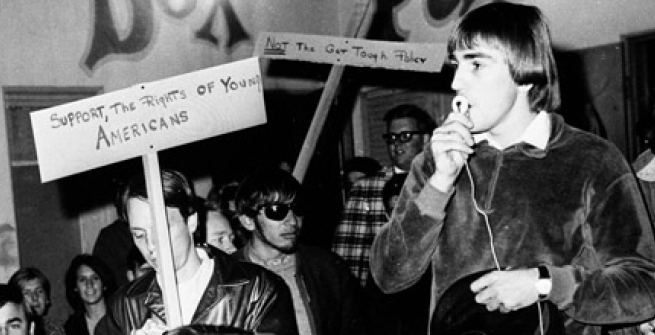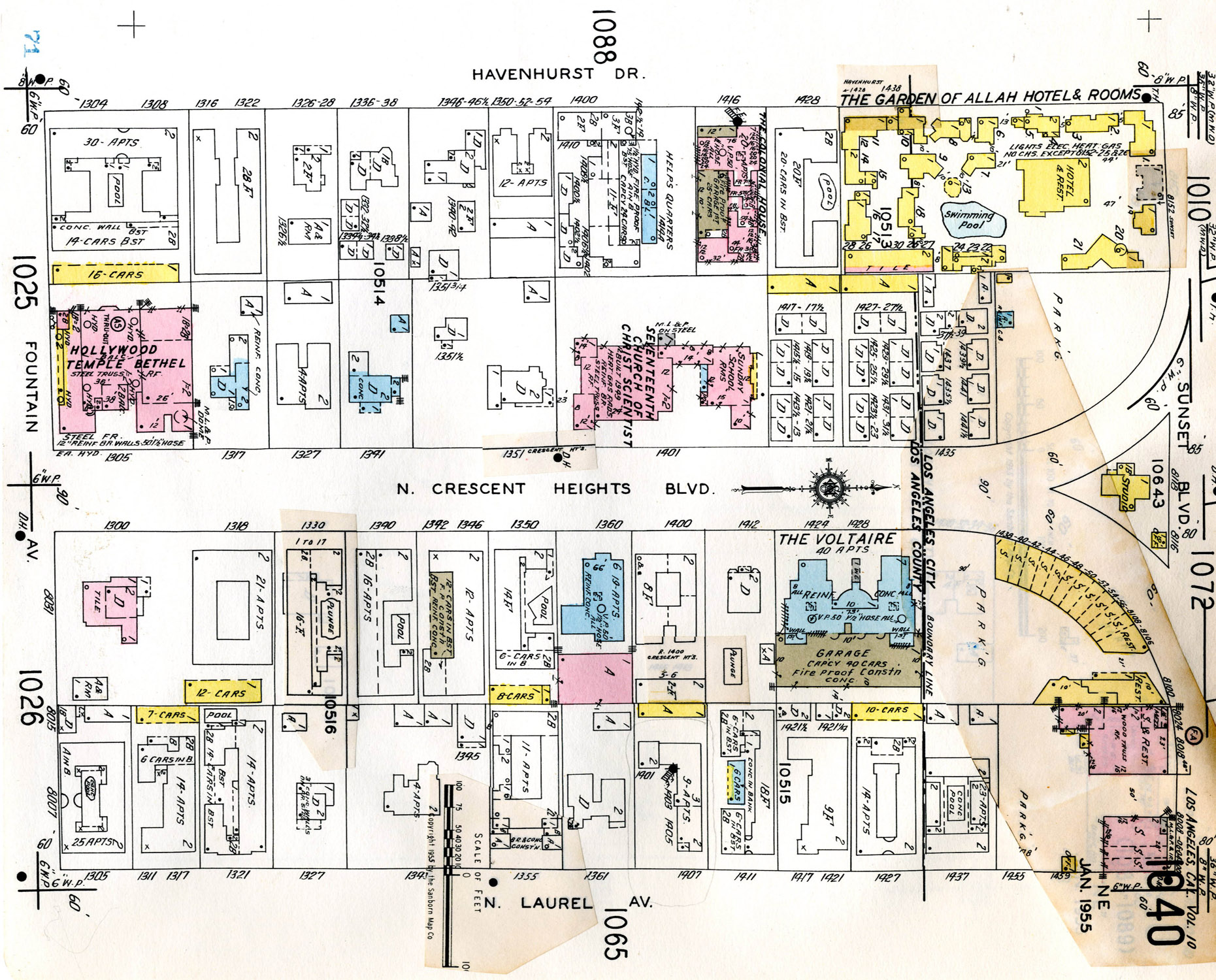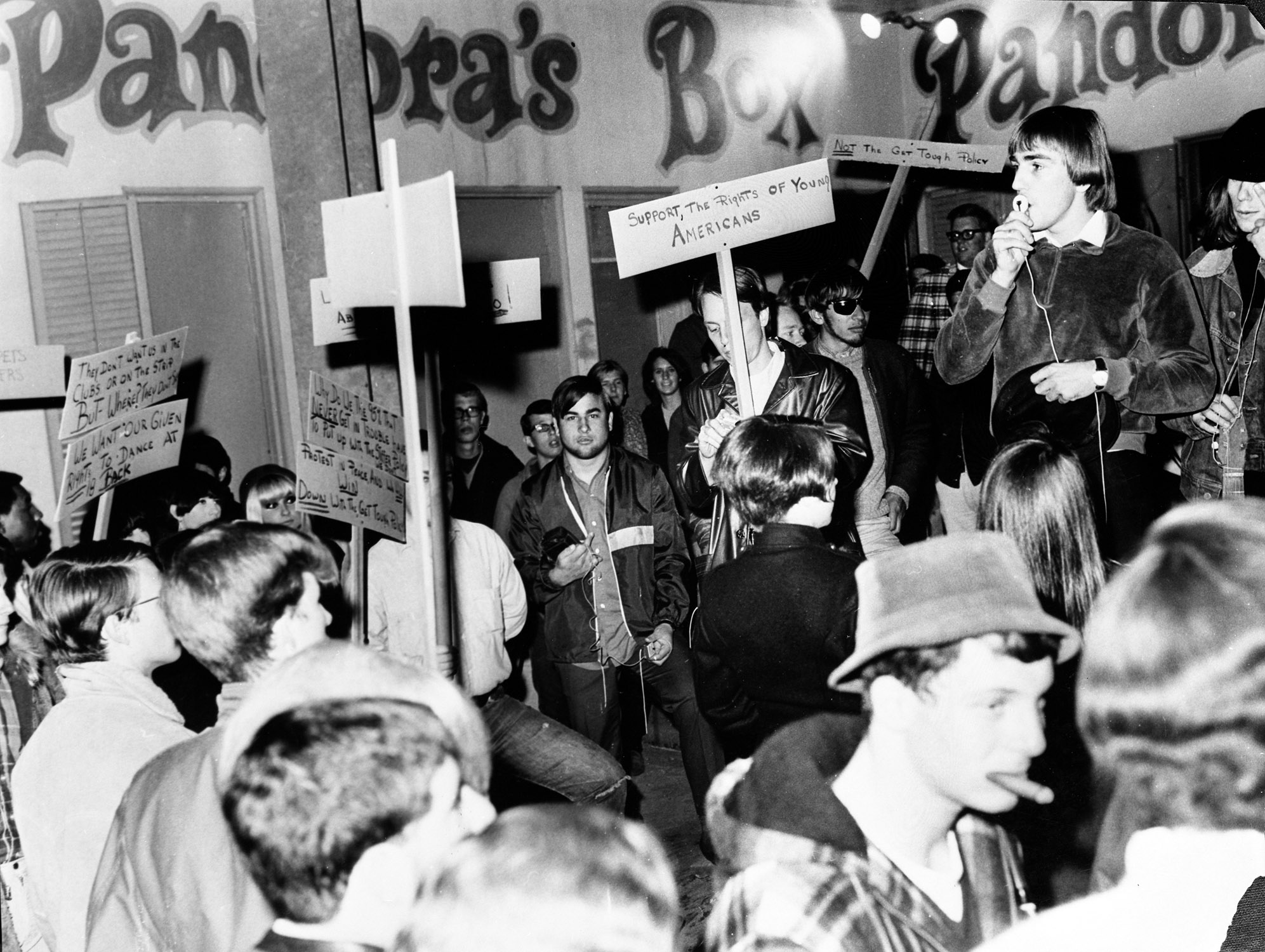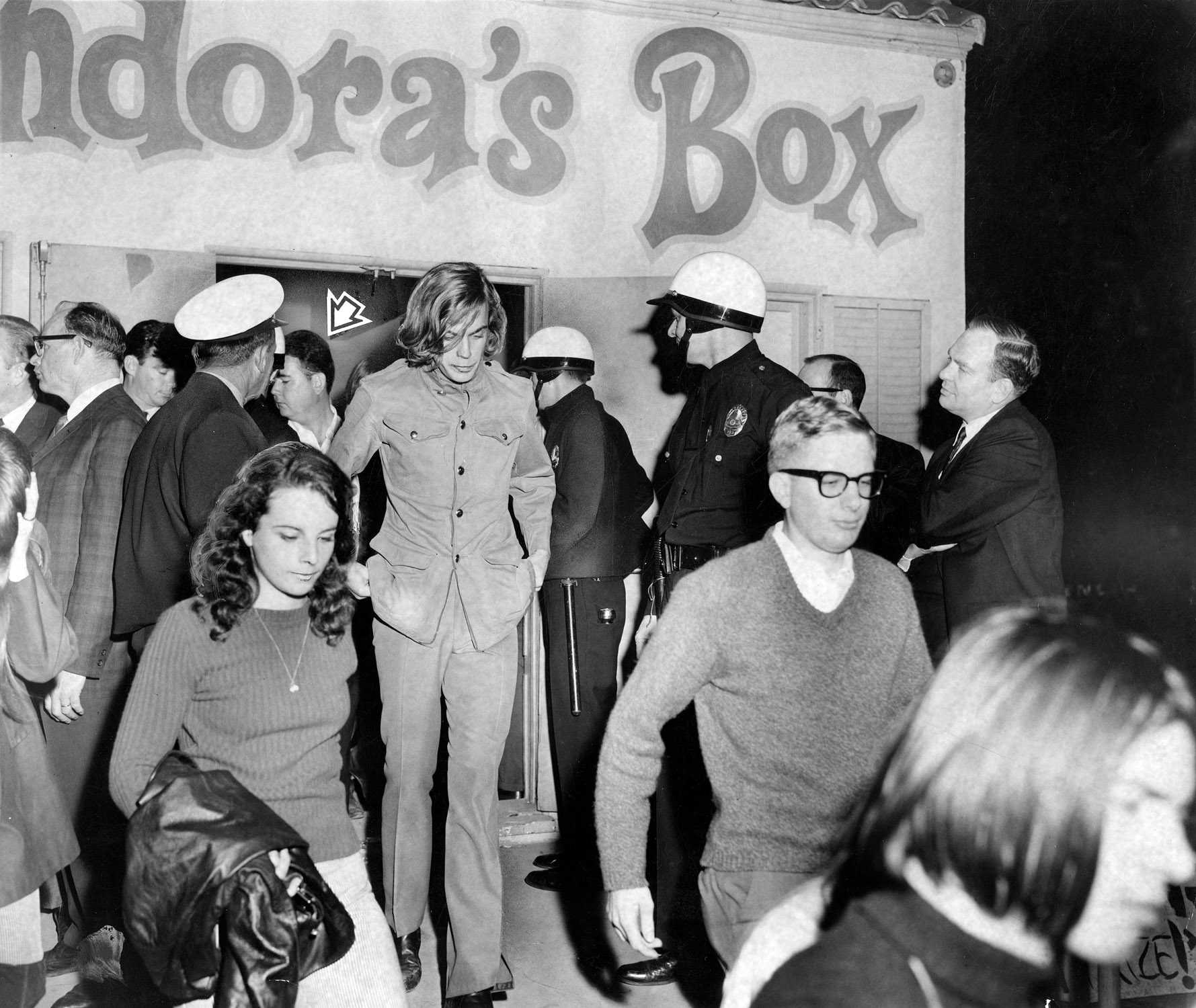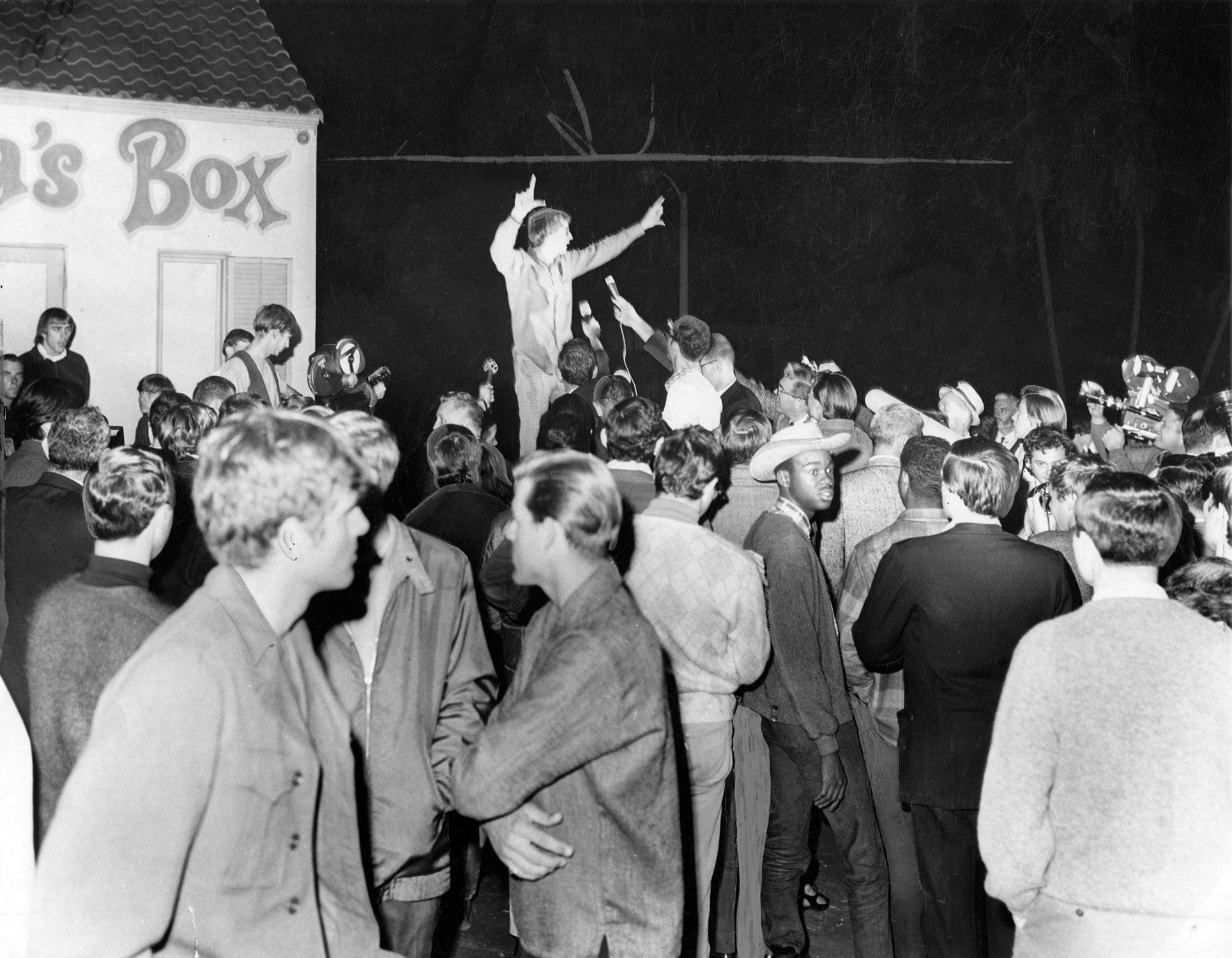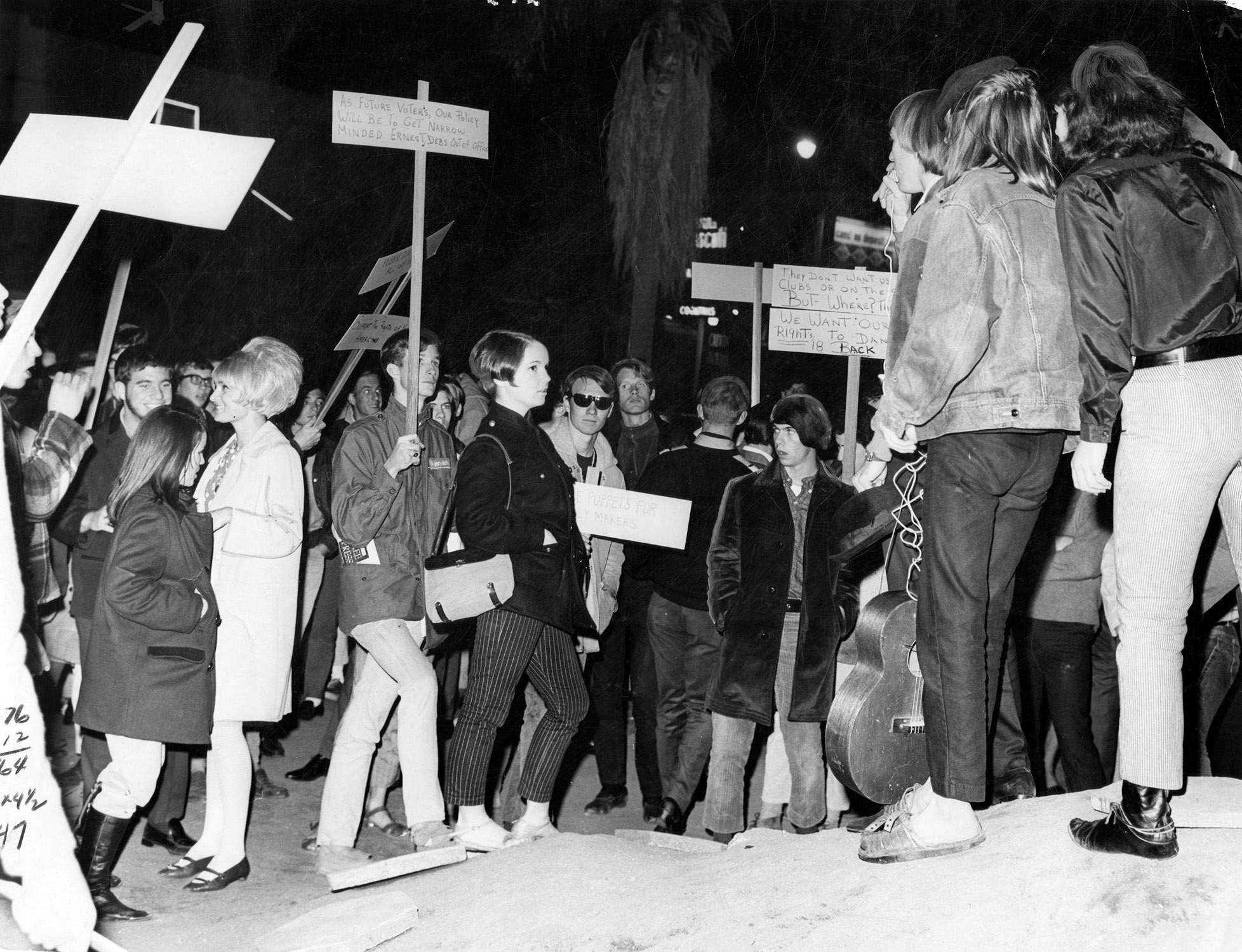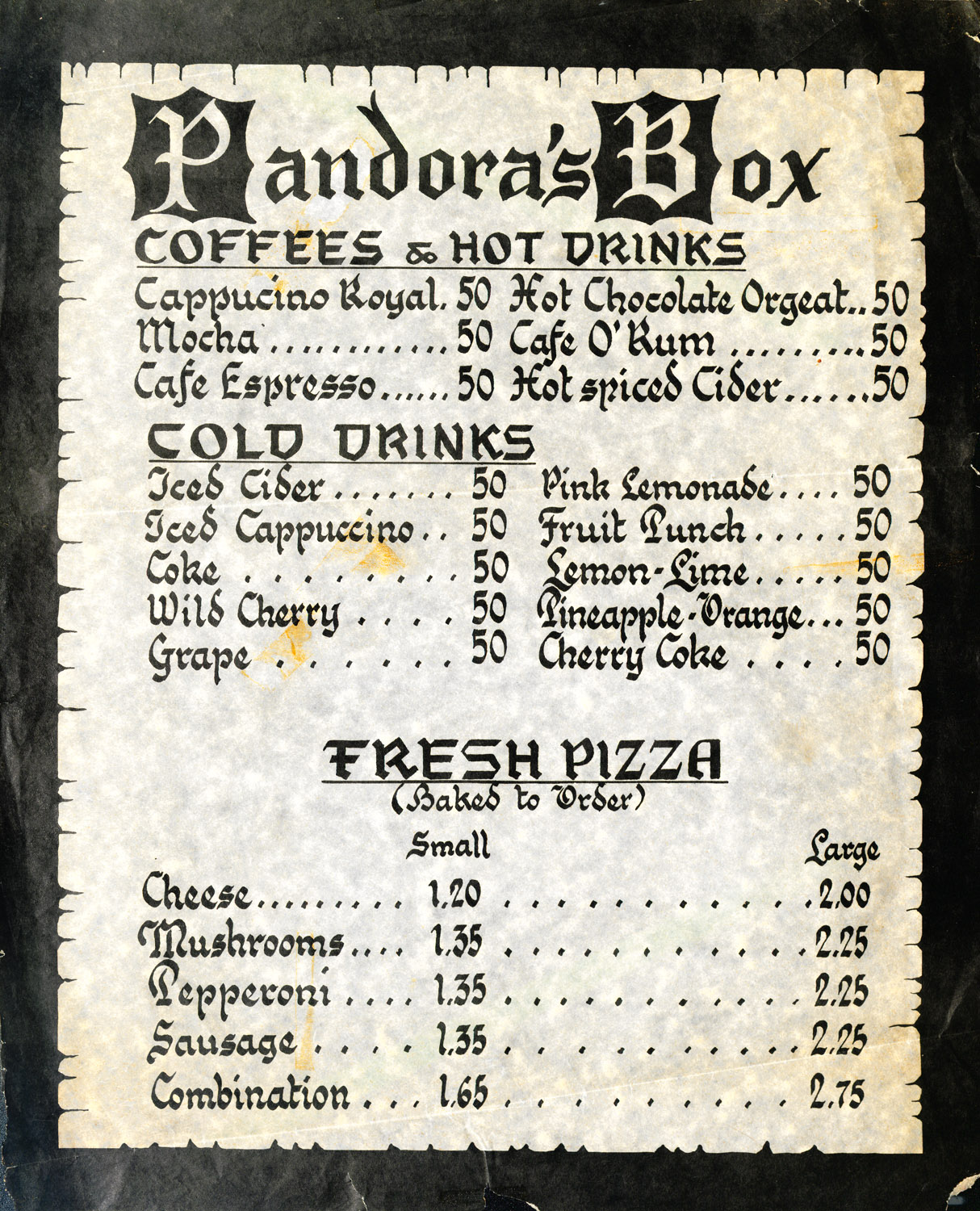The Sunset Strip curfew riots, popularly known as the “hippie riots,” exploded on November 12, 1966 and lasted through December of 1966. The counterculture youth protest was a reaction to perceived authoritarian overreach, and an exercise in civil rights by Los Angeles youth. The crackdown on the city’s youth started earlier in the year on Fairfax Boulevard outside of Canter’s Delicatessen when busloads of teenagers were carted away for curfew violations. These events influenced pop culture and were a turning point in the counterculture zeitgeist. They were a precursor to other demonstrations, like the Black Cat riots in Silverlake in 1967. These acts of civil disobedience were also influenced by civil rights marches and Anti-Vietnam protests that were going on at college campuses across the United States.
The Sunset Strip in the 1960s was the epicenter of the Los Angeles rock and roll scene, and known as one of many car cruising zones across Los Angeles. The Strip was home to multiple youth-oriented clubs and coffee houses. The Sunset Strip stretches from Crescent Heights on the east to almost Beverly Hills on its west. The Sunset Strip has been a hotbed of entertainment and distractions from at least the 1920s. Located on a concrete island at Sunset Boulevard and Crescent Heights was a club called Pandora’s Box, owned by Jimmy O’Neill, a local DJ and television host of Shindig! If you were hanging out at Pandora’s Box between 1962 and 1966, you would have seen groups like Sonny & Cher, the Beach Boys, the Byrds, and many other up-and-coming musicians. During this time there were more than a dozen clubs on the Strip with youth permits, which allowed teenagers to explore the musical landscape and contribute to the ongoing experiment of rock and roll. The mayhem which these forces created caused the local residents to complain about the shenanigans and noise of this musical circus. This was memorialized by The Standells in their song, “Riot on Sunset Strip.”
I'm going down to the Strip tonight
I'm not on a stay home trip tonight
Long hair seems to be the main attraction
But the heat is causin' all the action
Protesters in front of Pandora’s Box, [1966]. Herald Examiner Collection
These complaints caused an authoritarian response by city officials with the passage of strict curfew and loitering ordinances and an increased police presence. The new ordinances caused resentment and pushback from the city’s youth and counterculture. As tensions grew over the weeks, and Pandora's Box was facing closure, two teenagers printed up fliers for a protest against the police in front of Pandora’s Box. The fliers caught the attention of local rock and roll stations, who also spread the word for a rally at Pandora's Box. Between one to three thousand people gathered outside Pandora’s Box on November 12th 1966, including Sonny & Cher, Bob Denver, Peter Fonda, and Jack Nicholson.
What initially started as a peaceful protest that blocked Sunset Boulevard for miles in both directions, quickly started to turn as a group of teenagers attacked a bus. Some off duty marines fought with protesters, and then the cops showed up with an overwhelming force, aggravating and setting off the ensuing mayhem. Police overreaction was partly due to criticism the Police Department received from the Watts Riots a year earlier. The protest continued on and off for weeks. Pandora’s Box opened once more on Christmas Day in 1966, when Stephen Stills debuted “For What it’s Worth.” Pandora’s Box was torn down in August of 1967.
The cultural tipping point of the events on the Sunset Strip signaled a sea change in the attitude of the youth of Los Angeles to authority. Close to a dozen popular songs were inspired by the events on the Sunset Strip in November of 1966. Bands from the Monkees to Frank Zappa wrote songs about the “curfew riots,” including: “For What It’s Worth,” “Daily Nightly,” “Safe in My Garden,” “Riot on Sunset Strip,” “Scene of the Crime,” “S.O.S.,” and “Plastic People,” There was also a movie made in 1967 called Riot on Sunset Strip.
I hear the sound of marching feet...
Down Sunset Boulevard to Crescent Heights
...and there... at Pandora's Box... We are
confronted with... a vast Quantity of... plastic people...
Take a day and walk around
Watch the Nazis run your town
Then go home and check yourself
You think we're singing 'bout someone else
—Frank Zappa, “Plastic People”
The Special Collections Department of the Los Angeles Central Library recently acquired a menu from Pandora’s Box and the Photo Department has photos from the events of those November nights. The History Department has maps of the Sunset Strip, and then, of course, there are books covering the artistry and history of the Sunset Strip in the subject departments. So why don’t some of you groovy cats stop on by the library for your own cerebral riot located in the stacks of the Central Library.
